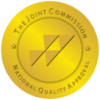As if typical addiction was not enough, there are people who actually go the extra mile just to get that better and stronger “high.” This, of course, necessarily means that the complications and side effects are compounded just as well, with a greater chance of overdose on the side.
This is the danger of getting into opiate potentiators, a practice that is not a trend, but something that many substance abusers have been doing for quite a while. The problem here lies not just in how much damage happens because of the practice, but also in how fast the damage occurs.
Jump to Section
How Are Opiates Combined with Potentiators?
 Potentiators are defined as other medications, herbs, or compounds used to expand or magnify the effects of a substance. This practice supposedly dates back to the 1600s, when morphine was first combined with cocaine and alcohol to increase its potency.
Potentiators are defined as other medications, herbs, or compounds used to expand or magnify the effects of a substance. This practice supposedly dates back to the 1600s, when morphine was first combined with cocaine and alcohol to increase its potency.
Today, there are a variety of things used as potentiators ranging from alcohol to over-the-counter medications, and even to juice drinks. A high percentage of overdose statistics usually involve the use of opiates and other narcotics being taken with alcohol, all in the hopes that the drug is absorbed by the body faster. Drug abuse involving potentiators is a significant concern due to the increased risk of overdose and severe health complications.
One of the more popular examples of opiate potentiator use is the combination of grapefruit juice with oxycodone. In many cases, the combination proved to be quite dangerous, with some going into critical condition because of the interaction.
This is because grapefruit juice is a CYP inhibitor, meaning it stops the activity of two particular enzymes in the stomach. Without the action of the two enzymes, oxycodone goes straight into the bloodstream without being processed by the gastrointestinal tract.
This is immensely important to know because grapefruit juice still acts as a potentiator to oxycodone even after 10 hours from the time the juice was taken. To a lesser extent, other forms of citrus, notably lime and oranges, also exhibit the same effect with oxycodone. This, however, does not mean that these citrus agents are safe to take with oxycodone.
What Are Some Other Potentiators?
The real danger of potentiator use is that because people have different reactions to substances, different thresholds and tolerances, and different absorption rates, it is really difficult to gauge just how dangerous mixing substances could be in general.
The best way to go about it is to refrain from mixing or ingesting medication with other substances unless instructed by a physician.
There is a long list of opiate potentiators known, including:
- Antihistamines
- H2 – agonists such as Cimetidine
- CYP enzyme inhibitors such as grapefruit juice
- NMDA antagonists such as Memantine, DXM, and magnesium sulfate
- Muscle-relaxants such as magnesium, Orphenadrine, Cyclobenzaprine, Carisoprodol, and Baclofen
- Antimalarial medications
- CCK-inhibitors such as Proglumide
- Opiate receptor agents such as Loperamide, Propoxyphene, and dextromethorphan
- COX inhibitors such as Naproxen
- CNS medications such as Cloridine, Benzodiazepine, Clomipramine, barbiturates, and stimulants
Why Use Potentiators at All if They Are So Dangerous?
Unless used in a clinical setting, with the guidance and recommendation of a physician, people are not advised to use potentiators on their own. This is because of the possibility that the magnified effects of the opiate being taken might be more than what the patient could handle.
The nature of opiates, their effect on the body, and the time it takes to get them out of the system put a very specific threshold on their clinical use. Potentiators are only used to heighten the effect without having to up the dosage beyond tolerable levels.
Those who use potentiators with opiates on their own run the risk of overdosing and suffering some very serious consequences, including the possibility of severe organ damage and death.
This is another reason why medicine bottles have a warning about taking anything else with the medication. In the case of an opiate potentiator, the danger lies not only in the direct reaction of the opiate with another substance, but in what the substance does to the body on its own.
The irony of this is that some potentiators are not even dangerous on their own, and only become dangerous when an opiate comes into the equation. Grapefruit juice is just fruit juice, and only becomes a potentiator if an opiate were to be taken with it or after it was ingested.
There are cases wherein the person suffering from the ill effects of the combination did not even know it was bad. This makes the situation where people willingly do it for an expanded or quicker high even sadder. They could have known how bad it could be, but they just didn’t care.
The most recent medical statistics indicate that in the US alone, at least 1000 people per day are rushed to the emergency room for opiate-related concerns. The known overdose deaths are associated with either taking too much of the substance over a prolonged period of time, or with a system shock due to the magnified effects brought on by a potentiator.
What Treatment Options Are Available for This?


It is not uncommon that many going through opiate withdrawal ponder or even attempt to kill themselves. For some suffering from mental issues, the stupor and brain haze produced by opiates could have been silencing their more disturbing thoughts, and the sudden removal brings back these destructive thoughts.
This is why the drug addiction treatment in Illinois for opiate addiction is rather comprehensive since there are a lot of problems to cover that come with the detoxification and rehabilitation phase.
Also known as the Inpatient Program, this treatment provides close monitoring and care, all done in a clinical setup. This is particularly helpful to those who develop destructive thoughts and tendencies once they stop taking the abused substance.
This treatment also works well for those who manifest physical issues while trying to kick the habit. The clinical staff attending to the patients all have medical training suited to the conditions brought about by substance abuse.
There are those who do a much better job of recovery outside of the typical hospital scenario. For these people, the Partial Hospitalization Program works quite well, as it offers the same care and counseling treatment as an inpatient program while allowing the patient to live away from the treatment center.
This is significantly more affordable, although there is a need to establish if indeed the patient has a safe and stable environment for their recovery outside of the facility.
Some patients in rehab respond much better to treatment if they are not constantly reminded that they are in a rehabilitation facility. For this purpose, the Intensive Outpatient Program provides the necessary treatment and counseling service without exposing the patient to what might be an intrusive and oppressive situation.
This program also offers a good gauge of the patient’s ability to reintegrate back into normal life and also proves if they can be responsible enough to report back to the facility for regular counseling.
Rehabilitation is all about weaning a person away from something that they developed a dependency on, which could be either drugs or alcohol. At the end of the program, the patient should be able to consciously say no to any urge or temptation to use and abuse substances again.
This also applies to the treatment and counseling itself. Patients cannot always depend on others to ensure that they stay away from drugs or alcohol since the choice to do so must be a personal and conscious one. The Outpatient Program enforces this by removing the patient’s dependence on the staff and facility to stay sober and teach them to do it on their own.
Find Help at Northern Illinois Recovery Center
We here at the Northern Illinois Recovery Center understand that patients need tools and guidance in the rehabilitation and recovery process.
We are here to provide those tools and guidance, but we are also here to ensure that after all the treatments, the patient is able to enjoy and maintain a full recovery all on their own.
Let us help you back up on your feet again.


Licensed Physician and Surgeon
Dr. Beth Dunlap, a board-certified addiction medicine and family medicine physician, and is the medical director at Northern Illinois Recovery Center. She is responsible for overseeing all the integrated medical services at both campuses. Beth completed medical school, residency, and fellowship at Northwestern University, where she continues to serve on the faculty as a member of the Department of Family and Community Medicine. She has extensive experience in addiction medicine at all levels of care, and her clinical interests include integrated primary care and addiction medicine, harm reduction, and medication-assisted treatment.



